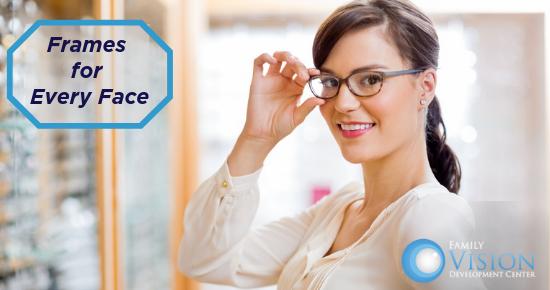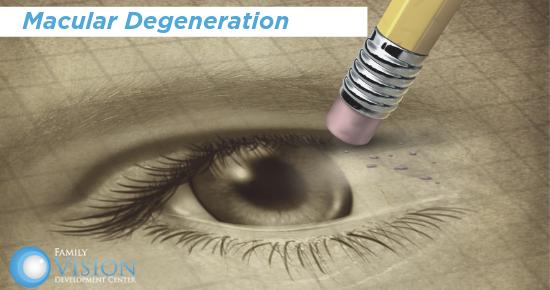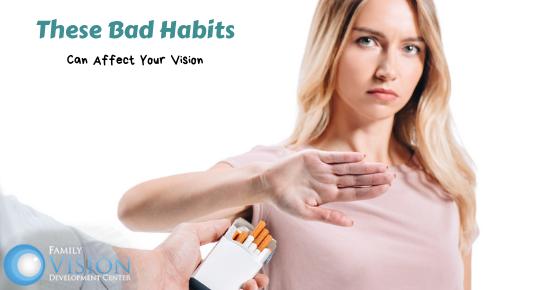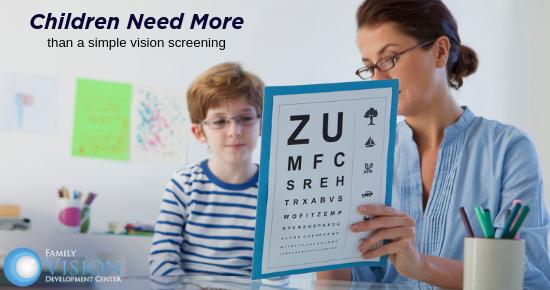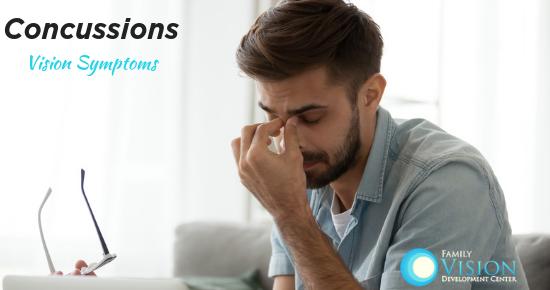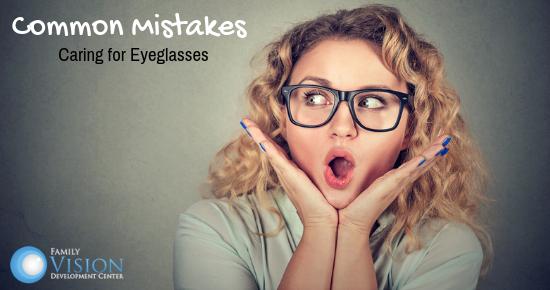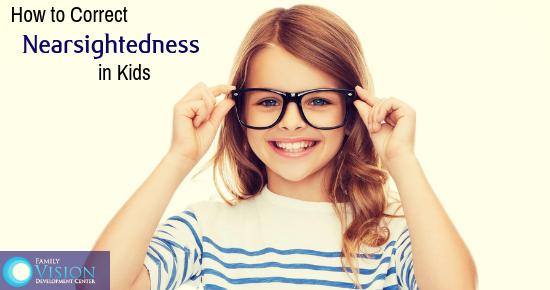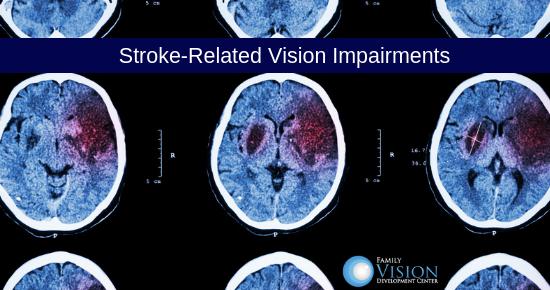When shopping for new eyeglasses, there are often so many styles, colors and shapes to pick from that it’s hard to know which pair to choose. Do you go with the latest style in the hottest new color that everyone is wearing now, or do you stick with a more classic choice that will stand the test of time? If you really want eyeglasses that will make you look and feel fantastic, you should make sure they are perfectly suited to your face. Here’s how you can accomplish that.
Eyeglasses Should Match Your Face Shape
Faces come in five basic shapes, and paying attention to which category your face most resembles can help you decide on the right kind of frames.
- Round – Choose frames that are rectangular or square, as they tend to make a face look slimmer and longer
- Square – Oval or round frames will help balance the angular features of this face shape
- Heart – Frames that are wider at the bottom will offset the wider forehead of this face shape, adding width to the narrower part of the face. Rounded frames can also be flattering here.
- Oval – Stick with frames that are wider than the broadest part of your face, that are not overly large, to maintain the symmetry of an oval face
- Diamond – Compliment a narrow forehead and chin by choosing frames that are wider than the cheekbones, such as cat eye or oval styles
Match Your Eyeglasses To Your Skin Tone
Eyeglasses come in many different colors, so figure out what your skin tone is and choose your frames to compliment your tone.
- Warm skin tone – a yellow or golden cast to your skin indicates a warm tone and is best complimented by shades of brown, gold or honey, as well as olive green, light tortoise, warm blue or red.
- Cool skin tone – these skin tones are indicated by pink or blue undertones and tend to look best in silver, black, gray, shades of pink or purple, jade and darker tortoise.
These are just suggestions, of course. Your favorite pair may not fall into any of these categories and that’s perfectly fine. As long as you feel great in your glasses, that’s all that matters!
Family Vision Development Center has a wide variety of great styles and colors to choose from in our state-of-the-art optical center. Contact us at 630-862-2020 to meet with one of our optical specialists to select the perfect frames to enhance your vision, as well as your confidence.
Additional information referenced here
Chances are you know someone who has been diagnosed with macular degeneration, as it affects more than 10 million people in the US. Read below for an overview of this disease and how you can protect yourself from being affected.
What Is Macular Degeneration?
Also known as age-related macular degeneration, or AMD, it refers to a condition in which the central portion of the retina, called the macula, is damaged and causes a loss of central vision. In early stages, there may be no symptoms. But as it progresses, central vision deteriorates and a black spot begins to appear in the center field of vision – which affects a person’s ability to read, drive a car and focus on fine details. Unfortunately, there are no scientifically proven causes for this disease, but there are some generally agreed-upon risk factors that include both genetic and environmental factors.
What Are The Risk Factors For Developing AMD?
These are the most common risk factors associated with the development of macular degeneration:
- Age – Your risk increases with age, and is most common in those people age 50 and older
- Diet – People who are overweight or eat a diet high in saturated fats can increase their risk
- Race – Caucasians are more likely to develop AMD over any other race
- Smoking – This can DOUBLE your risk
- Family history – you are more at risk if even one other family member has been affected
Treatment Options
Currently there is no cure for macular degeneration, but there are ways to manage the disease. These options include nutritional therapy using combinations of nutritional supplements, laser surgery, or the use of anti-VEGF drugs which are injected into the eye through a thin needle.
Macular degeneration is diagnosed by your eye doctor, who will perform special tests to analyze your retina and macula. It is always best to be diagnosed as early as possible, in order to implement more effective management of the disease. Schedule your appointment at Family Vision Development Center in Aurora if you are currently experiencing any vision issues, or to stay current on your annual eye exam, which is crucial for maintaining proper eye health. Call our office at 630-862-2020 or use our online appointment request form to select one of our convenient appointment times.
Additional information referenced here and here
Bad habits are hard to break, that’s for sure. But it’s even harder when you don’t even realize that some things you do out of habit can actually be causing vision problems! Take care of your eyes and protect your vision by avoiding the following bad habits.
Going Outside Without Sunglasses
You might think that it’s not necessary to wear your sunglasses if you’re just going out for a quick trip. But being outside for even a few minutes without them is a bad habit and a bad idea. Sunglasses protect your eyes from the sun’s harmful UV rays, which can cause damage like cataracts, macular degeneration or even skin cancer on your eyelids.
Smoking
Everyone knows that smoking is considered to be a bad habit. But along with the MANY other dangers associated with smoking, it can also have harmful effects on your vision. The smoke and chemicals from tobacco can damage blood vessels in your eyes, affect tear production and reduce the amount of oxygen that gets to the eyes. Smoking has been linked to vision loss and a number of eye diseases.
Wearing Old Makeup
Yes, makeup is expensive, so you may be hesitant to throw it away if there’s anything left to use. But keeping it around could end up costing you your vision. Old makeup can grow harmful bacteria that can lead to a serious infection. Try to develop a habit of regularly checking the expiration dates on your cosmetics and getting rid of any makeup that is more than about 4 months old.
Wearing Contacts For Too Long
Many people who wear contacts are probably guilty of leaving them in for longer than they should for any number of reasons. Too tired to take them out? Forgot to bring your supplies with you? Trying to save money by extending the time you wear them? Get rid of these bad habits now! Wearing contacts for too long can significantly increase the risk of infection and can cause damage to your corneas.
Thinking You Don’t Need To Visit An Eye Doctor
Believing you are immune to vision problems is indeed a very bad habit. Nobody is invincible and eye conditions and diseases can happen to anyone. Just because you think your vision is fine, does NOT mean that’s actually the case. Many vision conditions do not show any symptoms in the early stages, so you don’t notice a problem until it is too late.
Always make time to see your eye doctor for regular comprehensive eye exams! It is the best way to ensure your eyes are getting the best care and that any potential issues are diagnosed early enough to start successful treatment. Call Family Vision Development Center today at 630-862-2020 for more information.
Referenced article here
We’re all told to get our eyes examined on a regular basis. And it might be common sense to think that the earlier a vision condition is detected, the better the chance of treating it. But is a comprehensive eye exam the only way to detect eye conditions? Is it really that different from a vision screening? Read on to discover why comprehensive eye exams really are so important, and what takes place during the appointment.
Eye Exam Vs Vision Screening
YES, there is a big difference between these two types of procedures. A vision screening is a very basic test that only assesses vision, while a comprehensive eye exam involves a number of tests to provide a complete evaluation of your vision as well as the health of your eyes.
What Happens During The Exam?
First and foremost, the optometrist will get a full patient background and history in order to discover any past or present medical conditions or allergies. The doctor will then use a variety of tests and procedures in order to assess the health and function of your eyes. This can include testing for visual acuity, or the sharpness of your vision, along with procedures that asses how your eyes work together, how well your eyes can follow a moving object or move between two objects, and if there is evidence of proper depth perception when looking at a 3D object.
The doctor may also use a number of different instruments to determine your exact prescription for eyeglasses, and will examine the structure of the eye, including the eyelids, cornea, iris, lens, retina and optic nerve, under high magnification, which can uncover a wide range of eye conditions or diseases.
Why Is A Comprehensive Eye Exam So Important?
Many eye conditions show no obvious symptoms in the beginning stages and can go undetected for a long time, therefore continuing to worsen and increasing the risk of permanent damage. Unlike a vision screening, a comprehensive eye exam is the only way to diagnose most types of eye diseases or conditions, such as amblyopia (lazy eye), nearsightedness, farsightedness, astigmatism, cataracts, macular degeneration or glaucoma, or even health issues such as diabetes, thyroid disease or cancer.
The earlier these conditions are diagnosed, the faster treatment can begin, and the more likely you are to protect your vision. Call Family Vision Development Center at 630-862-2020 to schedule your appointment in our Aurora office.
Related articles can be referenced here and here
A concussion, also called a mild traumatic brain injury, is caused by a bump, blow or jolt to the head or the body that is violent enough to cause the brain to hit the skull. A concussion can result in mild to severe damage, and should always be taken very seriously. Among the many problems that can be caused by a concussion, such as headache, disorientation or memory loss, vision can also be affected. Some of the most common eye problems can include:
Double Vision
Seeing blurred or double images can be a sign of serious damage after a concussion and should be evaluated immediately. Although not always life-threatening, double vision can still cause dizziness, poor balance and difficulty reading or walking. Once it has been determined that it is not a serious injury, the double vision should be treated or managed by your optometrist.
Light Sensitivity
Photophobia, or sensitivity to light, is another very common side effect of a concussion, as people often complain of discomfort when in bright sunlight or fluorescent lighting. This is thought to be a result of the brain’s inability to adjust to varying levels of light due to the concussion, and can linger long after the initial injury.
Eye Tracking
After a concussion, a person may experience small, quick eye movements which can cause problems when looking from one object to another, as well as when trying to track and focus on a moving object. Hand-eye coordination can also be compromised, leading to difficulty playing sports and in the classroom.
Convergence Insufficiency
Convergence insufficiency, another common result of a concussion, is an inward turning of the eyes and causes a person to have trouble focusing on objects that are close. They have difficulty using their eyes together for activities such as reading or working on a computer and often complain of eyestrain, headaches or an inability to concentrate.
Vision problems after a concussion can be debilitating. At Family Vision Development Center, we have extensive training in diagnosing and treating these conditions and more. Our comprehensive eye exams and advanced vision therapy treatments can help successfully restore your vision quickly and efficiently. Contact us at 630-862-2020 to make your appointment at the first sign of a possible concussion.
Referenced articles here and here
A new study has been released that indicates that Amblyopia can cause a child to suffer from low self-esteem. The findings of the study, which was published in the November 15thJAMA Ophthalmology, highlight the fact that children with Amblyopia had a lower self-perception of their social abilities, as well as their academic and athletic performance. Treating this eye condition can have a positive impact on a child’s vision as well as their quality of life.
What Is Amblyopia
Also referred to as “Lazy Eye”, Amblyopia is a common eye condition in children that occurs when the eyes and the brain do not work together properly, and results in poor vision in one eye, even with the use of proper glasses or contact lenses. Although a child may not even mention their symptoms to a parent, this study shows that it can have far deeper effects on a child’s life than just impaired vision.
Typical Symptoms
Indications of Amblyopia can include the more-obvious physical symptom of a “lazy eye” with one eye wandering in a different direction, as well as less-obvious signs such as squinting, poor depth perception or double vision. These symptoms can lead to poor performance in school due to slower reading or writing skills, and can inhibit motor skills, causing a child to have difficulty engaging effectively in sports activities. According to the study, all of this can result in a child experiencing a lower sense of self-esteem, as they compare themselves to their higher-performing peers.
Treatment With Vision Therapy
Vision therapy is an extremely effective form of treatment for Amblyopia and can be described as physical therapy for the visual system, which includes the brain and eyes. Using a series of eye exercises, it is possible to restore normal communication between the eyes and the brain, thus correcting the eye condition. When it comes to successfully treating Amblyopia, it is best to try to start as young as possible, although good results are possible at any age. Early detection is accomplished through comprehensive eye exams, which should begin as young as 6 months old.
Family Vision Development Center provides comprehensive eye care for the whole family. We believe that regular eye exams, starting at an early age, can prevent many eye diseases or can allow us to diagnose and treat them before they get worse. Call us at 630-862-2020 to learn more and to schedule an appointment.
Referenced article here
With the cost of a new pair of prescription eyeglasses, it is surprising how often people mistreat them. Not properly caring for your eyeglasses can lead to unintentional and unnecessary damage, or even the need for replacement, so follow these tips to help your eyeglasses stay protected.
What You Definitely Should Do
The best thing you can do for your glasses is to keep them clean. Keep the following things in mind in order to avoid scratching the lenses or causing other damage during the cleaning process:
- Make sure your hands are clean and free of dirt or oils
- Use lukewarm tap water and a drop of dishwashing liquid, and gently rub both sides of the lenses and frames
- Rinse thoroughly and shake to remove excess water
- Gently dry with a clean, soft microfiber cloth for best results
Besides regularly cleaning your eyeglasses, you can further protect them by keeping them stored in a hard case when not wearing them, keeping the lenses facing upward when laying them down, and remembering to put them on and remove them using both hands in order to avoid misaligning the frames.
What You Should Avoid Doing
Glasses don’t last forever, so to get the most life out of them you must stop abusing them! Here are some things that can damage your eyeglasses:
- Using your clothes to wipe the lenses – wiping your glasses on your shirt can scratch the lenses or leave lint behind
- Putting them on top of your head – this can stretch out the frames
- Falling asleep with them on – this may not be intentional, but it can also misalign the frames so try to remember to take them off when you lie down
- Using household glass cleaning products to clean them – the ingredients in these products can cause a lot of damage to the lenses
Visit Family Vision Development Center in Aurora for the best selection of designer eyewear and the most up-to-date lens technology. Along with your thorough eye exam, you will also receive complete instructions for the proper care of your new glasses. Call us at 630-862-2020 to schedule your appointment or use our convenient online scheduler.
Referenced articles here and here
We’ve all heard that eating carrots can be good for your eyes, but have you ever wondered why? And did you know that there are many other foods that can help enhance and protect your vision? In fact, studies have shown that certain nutrients, like zinc, copper, vitamin C, vitamin E, vitamin A and beta carotene, can significantly reduce the risk of age-related decline in eye health.
Eat These Smart Foods To Improve Your Vision
- Fish – many types of fish, such as tuna, salmon, trout or sardines, are high in omega-3 fatty acids that can be vital to eye health.
- Nuts, Legumes and Seeds – walnuts, cashews, peanuts, chia seeds and flax seeds are all great sources for omega-3s
- Citrus fruits – fruits like oranges, lemons and grapefruits are high in vitamin C and can help to fight age-related eye damage
- Carrots – this vegetable is often referred to as a vision enhancer and is rich in both vitamin A and beta carotene, which can have a positive effect on vision
- Beef – beef is high in zinc, which is known to delay macular degeneration and improve overall eye health
Choose Foods For The Nutrients
- Vitamin A – Carrots, kale, spinach, dairy products, egg yolks
- Vitamin C – Citrus fruits (especially kiwi fruit) and juices, green peppers, broccoli, potatoes
- Vitamin E – Eggs, whole grains, vegetable oils, sunflower seeds
- Lutein – Spinach, corn, kale, broccoli, Brussels sprouts
- Fatty Acids – Coldwater fish, such as salmon, mackerel, and rainbow trout; sunflower oil, corn oil
- Zinc – Meat, poultry, fish, whole grains, dairy products
Eating the right foods is a great way to be proactive about protecting your vision, but it certainly should not replace regular eye exams with your optometrist. Visit Family Vision Development Center for your comprehensive eye exam, which is the most effective way to detect most eye diseases and conditions. Call us at 630-862-2020 or use our online request form to schedule your appointment.
Referenced articles here and here
If your child is experiencing nearsightedness, or myopia, it means that they can clearly see objects that are close, but objects in the distance look blurry or out of focus. In a school setting, this means they have no trouble seeing the pencil and paper at their desk, but they may have difficulty reading what is written on the smart board at the front of the room.
What Causes Myopia
Myopia occurs when the eyeball is too long from front to back, or if the cornea is too curved. This causes the eye’s lens to focus an image in front of the retina, instead of on the retina, resulting in distant objects looking blurred. Heredity is thought to play a large part in the development of myopia, and a child has a greater chance of experiencing the condition if both parents also suffer from it. Other evidence points to environmental factors such as lack of time spent outdoors or excessive time spent on close-up work such as reading or working on computers as a possible cause.
Diagnosis Of Myopia
A comprehensive eye exam performed by an experienced optometrist like Dr. Martin at Family Vision Development Center is the way to detect myopia in children. Often, kids will not mention that they are having difficulty with their vision, and standard vision screenings at school will not detect myopia. That’s why it is important to keep them on a regular schedule when it comes to eye exams. Kids should get their vision checked at 6 months, 3 years old, before kindergarten, then annually after age 5.
Treatment Of Myopia
The most common form of treatment for myopia in children is with prescription eyeglasses or contact lenses. The right choice will depend on the age and maturity level of the child and should be discussed with your eye doctor. Regular exams will be necessary, as prescription strengths may need to be increased as the child gets older.
Family Vision Development Center is a full service vision care provider, offering eye care services for the entire family. We emphasize preventative care as well as specialized treatment for many eye diseases and conditions. Call 630-862-2020 for more information or to schedule an appointment.
Referenced articles here and here
A stroke occurs when blood flow to an area of the brain is cut off and brain cells begin to die due to a lack of oxygen. When this happens, abilities that are controlled by the affected area of the brain can be impaired. Vision disturbances often occur after a stroke and vision therapy can be implemented as a form of treatment. Some forms of vision impairment resulting from a stroke include the following:
Spatial Inattention
Commonly referred to as “neglect”, this form of impairment causes a person to ignore everything on the side of the brain that was affected by the stroke (for example – leaving food untouched on the left side of a plate, or not shaving the left side of the face). In some cases, they might not even realize that side exists. Vision therapy can include learning to scan from side to side, or working with prisms or mirrors, in order to re-learn how to process information on that side.
Double Vision
Seeing two objects instead of one can be an effect of a stroke in the brainstem. The muscle weakness resulting from a stroke can cause double vision, or diplopia, and can be effectively treated with vision therapy through the use of exercises that encourage the eyes to work together.
Eye Movement Problems
Impaired eye movement are common after a stroke and can include an inability to follow objects with your eyes or move smoothly between objects, or quick, jerky eye movements that cause blurriness or dizziness. Visual rehabilitation can help alleviate these symptoms and restore the ability to perform everyday functions like reading or walking.
It is important to remember that not all visual impairments happen immediately after a stroke, so if you have experienced a stroke it is important to see your eye doctor regularly to ensure that any newly resulting vision issues are diagnosed and treated as soon as possible. Dr. Martin at Family Vision Development Center is specially trained in advanced vision therapy techniques. He will conduct a thorough exam to properly diagnose any stroke-related vision conditions and determine the most effective treatment options. Schedule your appointment online or call 630-862-2020.
Referenced articles here and here
